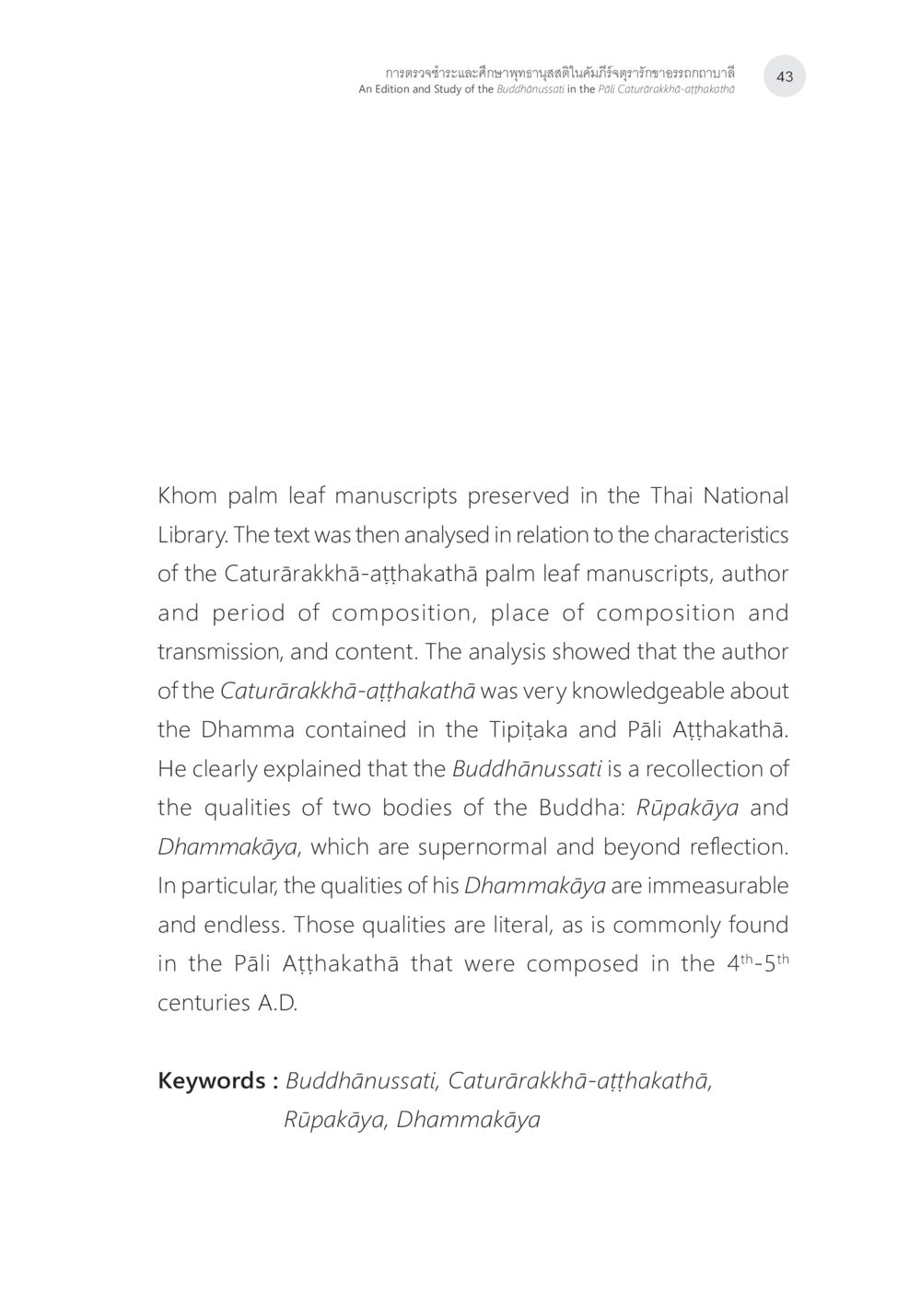Analysis of Khom Palm Leaf Manuscripts in Thailand : หน้า 6/62
การตรวจชำระและศึกษาพุทธานุสสติในคัมภีร์จตุรารักขาอรรถกถาบาลี : หน้า 6/62 Explore the characteristics and significance of Khom palm leaf manuscripts, focusing on the Caturārakkhā-āṭṭhakathā text and its insights into Buddhist doctrine.
0 ครั้ง

สรุปเนื้อหา
This text delves into the Khom palm leaf manuscripts preserved in the Thai National Library, analyzing the Caturārakkhā-āṭṭhakathā in terms of its authorship, period, and content. The author shows a deep understanding of Dhamma from the Tipiṭaka and Pāli Atthakathā, particularly emphasizing Buddhānusati, which refers to recollecting the qualities of Buddha's bodies: Rūpakāya and Dhammakāya. The qualities attributed to Dhammakāya are described as supernormal and beyond human reflection, showcasing their immeasurable nature. These insights align with the Pāli Atthakathā literature from the 4th-5th centuries A.D., providing valuable context for scholars and practitioners alike.
หัวข้อประเด็น
-Khom palm leaf manuscripts
-Analysis of Caturārakkhā-āṭṭhakathā
-Buddhānusati and its significance
-Understanding Dhammakāya and Rūpakāya
-Historical context of Pāli Atthakathā






























































